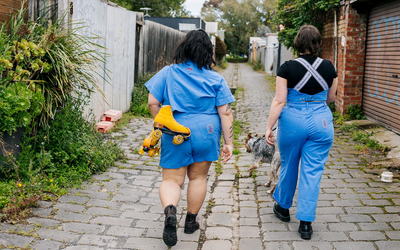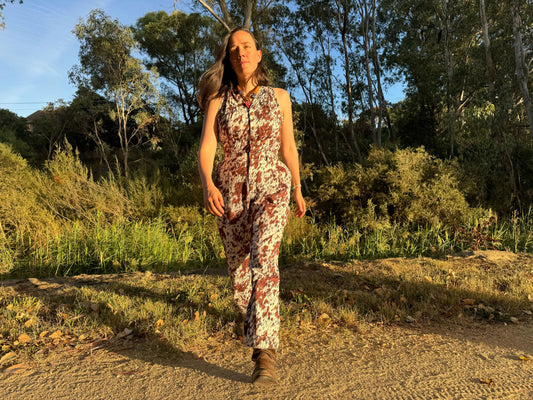The word “denim” comes from the French phrase “Serge de Nîmes”, referring to a sturdy twill fabric first woven in the town of Nîmes, France. What set this fabric apart was its unique construction - a cotton twill weave made using one coloured thread (usually indigo) and one white thread. This weaving method gave denim its signature diagonal ribbing and durability.
From Mines to Mass Production
Denim’s journey into American and Australian culture began in the mid-19th century, during the California Gold Rush. A tailor from Nevada, Jacob Davis, found that local labourers, miners, railroad workers, and cowboys needed tougher clothing. He began reinforcing pants with metal rivets. His new way of producing work pants was so successful that he partnered with his denim supplier, Levi Strauss & Co., to patent the design in 1873 and scale up production.

These early jeans were strictly for work. They were designed to endure heavy wear and tear in some of the most physically demanding environments.

Women and Workwear: Denim Breaks Gender Norms
Although originally designed for men, denim workwear also played a crucial role in women’s labour history.
During World War II, as millions of men were drafted and sent overseas, women entered the industrial workforce. Factories, shipyards, and farms became sites of female labour, and women needed durable, practical clothing. Brands like Levi’s and Lee began producing denim overalls, trousers, and coveralls specifically for women working in these tough environments.

The iconic “Rosie the Riveter” poster came to symbolise the era. In reality, many women wore denim every day on the job. It was rugged, washable, and protective, ideal for factory floors and assembly lines. This era marked a turning point: denim was no longer just for male labourers, but a practical choice for working women.

Even before the war, women had begun wearing denim for physical work. Women on ranches, farms, and in mining towns often wore men’s jeans or specially tailored versions for horseback riding and outdoor labour.
Denim Goes Hollywood
After the war, denim started appearing outside the workplace and on the silver screen. Hollywood helped transform it from a work uniform to pop culture staple. In the 1950s, stars like Marilyn Monroe, Ginger Rogers, and Jane Russell were photographed in fitted jeans, helping to rebrand them as both glamorous and rebellious.

At the same time, male stars like James Dean and Marlon Brando donned jeans in films like Rebel Without a Cause and The Wild One, fueling their association with rebellion and counterculture.
A Timeless Classic
Over the decades, denim evolved through numerous reinventions: bell-bottoms in the ’70s, acid wash in the ’80s, low-rise in the early 2000s, and now, a full spectrum of fits and washes catering to every aesthetic. Yet its roots in utility are never far behind.

Whether on the runway or on a construction site, Denim has remained a staple for over 200 years. It's appeal lies in its perfect balance: strong enough to withstand rugged environments and stylish enough to remain a fashion essential. From gold miners and riveters to supermodels and street style icons, denim has clothed generations and it shows no signs of fading away.




